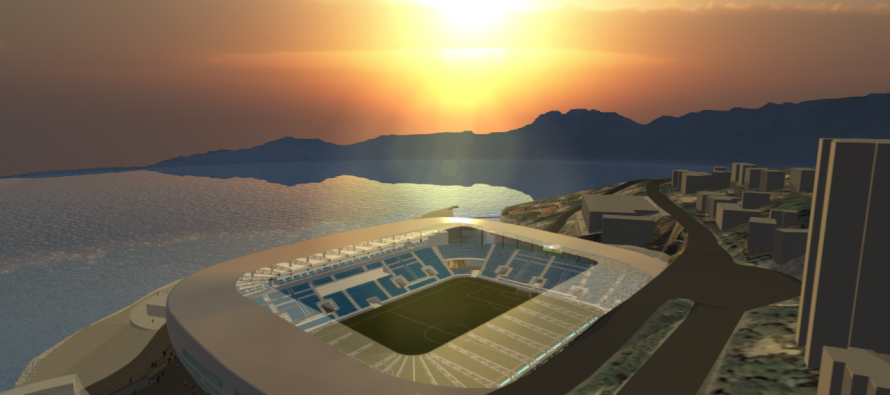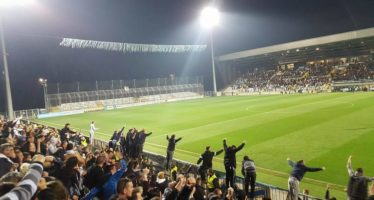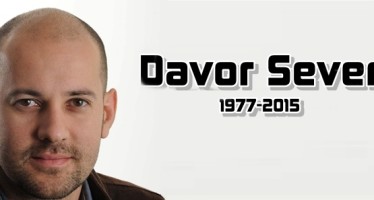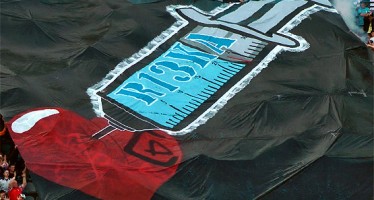HNK Rijeka: The Rise of the Phoenix

Hrvatski Nogometni Klub Rijeka (Croatian Football Club Rijeka), commonly referred to as HNK Rijeka or simply Rijeka, is a Croatian football club, from the city of Rijeka on the Croatian coast. The club was founded as NK Kvarner in 1946, after Rijeka (known by its Italian name Fiume up to 1945) was passed from Italy to Yugoslavia following the end of the Second World War. The club changed its name to NK Rijeka on 3 June 1954. After spending most of the early post-war years in lower divisions, Rijeka was promoted to the Yugoslav First Division in 1958, where it played for 11 consecutive seasons before being relegated in 1969. In 1974, Rijeka was again promoted to the First Division, where it played for 17 consecutive seasons until the breakup of Yugoslavia in 1991.
In terms of major successes during this period, most notable are two Yugoslav Cup titles in 1977-78 and 1978-79. While never finishing better than 4th, Rijeka was the best placed Croatian club in the Yugoslav First Division on three occasions, in 1964-65, 1983-84, and 1986-87. Prior to the breakup of Yugoslavia, Rijeka participated in UEFA competitions on four occasions. The most notable results in Europe have been a home draw (0-0) against Juventus in the Quarterfinal of the 1979-80 UEFA Cup Winners’ Cup and a 3-1 home win against Real Madrid in the 1984-85 UEFA Cup. Notably, in the return leg against Real Madrid at Santiago Bernabeu, which Rijeka lost 3-0, three of its players were sent off and the extraordinary Belgian referee Schoeters ensured that the eventual competition winner progressed to the next round. Real scored their first goal from a doubtful penalty in the 67th minute with Rijeka already down to 10 men. In the next 10 minutes, two more visiting players were sent off, most notably Damir Desnica. While Desnica received the first yellow card because he did not stop play after Schoeters blew his whistle; the second ensued because he, allegedly, insulted the referee. However, unbeknownst to the ref, Desnica had been a deaf-mute since birth. With Rijeka reduced to eight players, Real scored two more goals, went on to the third round and eventually won the trophy. Schoeters was never punished, but the anti-Madrid press spoke of the “miracle of Bernabeu”. Where else could a mute man talk if not at soccer’s greatest shrine, Real Madrid’s stadium?
Since the independence of Croatia in 1991, Rijeka has been one of only four clubs that has played in the Prva HNL (Croatia’s top tier) without ever being relegated. The club has had its ups and downs in terms of performance due to occasional financial difficulties. While never winning the title, Rijeka finished as runner-up on four occasions, in the 1998-99, 2005-06, 2013-14 and 2014-15 seasons of the Prva HNL. Most notably, the title was stolen from Rijeka in the last round of the 1998-99 Prva HNL season, when the referee disallowed a clear goal that would have secured the club its first national title. In other competitions, Rijeka won the Croatian Cup on three occasions, in 2004-05, 2005-06 and 2013-14, and the Croatian Supercup in 2014.
During this period, Rijeka participated in UEFA competitions on 10 separate occasions, with the most notable success in the past two seasons (2013-14 and 2014-15), when the club qualified for Group Stages of the UEFA Europa League. In the 2013-14 season, this was achieved by defeating VfB Stuttgart (4-3 on aggregate) in the Playoff Round. Rijeka supporters will never forget the winning goal scored in the third minute of stoppage time at the Mercedes Benz Arena. In the Group Stage, Rijeka recorded four draws (at home against Real Betis, Olympique Lyonnaise and Vitória de Guimarães, and away against Real Betis) and two defeats. The most memorable moment during the Group Stage included a fantastic goal scored by Andrej Kramarić against Lyon. In the following season, Rijeka breezed through the qualifying stages, recording six wins in as many games. In the Group Stage, Rijeka won two games at home (against Feyenoord and Standard) and drew at home against past and future winners Sevilla. Rijeka were unlucky in the match against Sevilla, conceding an equalizer in the stoppage time.
The Volpi-Mišković era
Due to significant debt accumulation that amounted to over €2 million, the club was in serious financial difficulties between 2009 and early 2012. If it wasn’t for the arrival of foreign capital in February 2012, the club would have most likely folded later that year. Fortunately, however, driven by his closest associate and a Rijeka native Damir Mišković, Gabriele Volpi, an Italian businessman with significant and long-established interests in Africa’s oil & gas logistics sector through Orlean Invest, injected much needed capital into the club. Initially, the debts were paid off and the club stabilized. With the privatization process complete in September 2013, Volpi, through Social Sport Foundation, became the owner of 70% of the club, with the City of Rijeka in control of the remaining 30%. Orlean Invest donate up to 2% of their annual revenues (that often amount to over $5 billion) to Social Sport Foundation for social and sports activities in Nigeria (Abuja football academy), Italy (Spezia Calcio) and Croatia (HNK Rijeka).
Mišković, a passionate supporter of the club since his childhood, became the club Chairman on 20 March 2012. Since then, Rijeka’s growth has been stellar. With stable finances, the club management was able to avoid turbulence in the dressing room. After barely avoiding relegation in the 2011-12 Prva HNL, in the following season, Rijeka’s team was very competitive and eventually finished third. Besides financial consolidation, this early period of the new era in the club was characterized by significant changes in personnel both on and off the field. While many new players arrived, the most notable arrival was that of manager Matjaž Kek, who took over from Elvis Scoria on 27 February 2013. Kek, who led his native Slovenia to (and at) the 2010 FIFA World Cup after beating Guus Hiddink’s Russia in the play-offs, has been absolutely instrumental in getting Rijeka the results on the field that not even the most optimistic supporters would have dreamed of in 2011.
After securing a spot in the UEFA Europa League Qualifiers in the nail-biting finish to the 2012-13 Prva HNL, and the first full season under a new management, the following season was to be momentous. With a budget of approximately €6 million, during the 2013-14 season, Rijeka managed to qualify for the Group Stage of Europa League, finish as runner-up in Prva HNL (eleven points behind Dinamo Zagreb and as many points ahead of Hajduk Split), and win the Croatian Cup by defeating Dinamo Zagreb in both legs. It was during this season that the stadium was sold out on four separate occasions, something unprecedented since the late 1990s. In many ways, it was the most successful season in the club’s history. The win in the Croatian Cup Final on 13 May 2014 – it was the first trophy ever won at Stadion Kantrida – was just the icing on the cake.
The next season started just as the previous one finished, with a trophy. Less than two months after winning its fifth Cup title in its history, Rijeka won its first Supercup by defeating (once again) Dinamo Zagreb at Stadion Kantrida in a season opener. That day, 11 July 2014, will also be remembered as the day when detailed structure designs were released for the new Kantrida stadium, to which we turn our attention next.
Stadion Kantrida
Stadion Kantrida is named after the Kantrida neighborhood in which it is located, in the western part of the city. Initially built in 1913, it has served as Rijeka’s home ground since 1946. While the capacity stood at 22,000 during the 1980s and 1990s, it was reduced to 10,200 after seats were installed as per UEFA requirements in 1999. The stadium has a distinctive appearance as it is situated between steep cliffs (a remnant from an old quarry) rising above the stadium’s northern stand and the shore of the Adriatic Sea on its south side, which earned it a place in the list of the world’s most unusual football stadiums, compiled in 2011 by the CNN. Moreover, in April 2014, the stadium was included in the world’s top 13 most beautiful sports venues, as compiled by Eurosport.
Notwithstanding its beautiful and unique setting, which appeals to many foreign tourists that visit Rijeka, the centurion has outlived its usefulness for the club, and has been in a dire need of reconstruction. HNK Rijeka has had significant problems during the last season because of the stadium. First, given that the pitch is too narrow (66 meters) it falls two meters short of UEFA’s (105m/68m) requirements. Second, ground facilities, including adequate space for VIPs, media, official parking, etc., also fall short of UEFA’s requirements. As a result of these shortfalls, the club was compelled to improvise in order to bring the standards partially in line with strict UEFA requirements for Europa League Playoff and Group Stage matches. This was very costly and time-consuming and may have to be repeated again in the new season depending on whether Rijeka is able to match its last season’s performance. Third, during the 2013-14 season three home games were postponed (some on several occasions) due to pitch flooding caused by underground waters. As the pitch is only three meters above sea level and Rijeka is a hilly city that also happens to be one of the rainiest places in Europe, massive volumes of rainwater flow towards the Adriatic. If Rijeka experiences heavy rain for a prolonged period, it is very likely that parts of the pitch would be flooded and, if a match is scheduled, it would have to be postponed.
Consequently, after getting support from the City of Rijeka, and to the excitement of a vast majority of the supporters, the club’s new management led by Chairman Mišković decided to build a new stadium on the same grounds. On 11 July 2014, Mišković released detailed structure design for the new Kantrida stadium. The current stadium will be demolished in December 2014 and a new, state of the art, stadium built at the same location. The capacity of the new stadium will be 14,600 with all of the seats covered. The stadium will be UEFA category four. The construction of the stadium will be privately funded and the cost has been estimated at €21.5 million. The architect of the project is Gino Zavanella who was also one of the architects of the new Juventus Stadium. The construction is scheduled to be completed by 2017. Photos and 3D imagining of the design for the new stadium (available at www.stadionkantrida.hr/en) have revealed that the stadium will maintain its connection to both the cliffs and the Adriatic. The cliffs will remain the natural barrier to the north and the transparent north stand cover will enable the view of the cliffs. When viewed from the outside, the design reveals that the stadium will have a shape of a ship, which goes in line with Rijeka’s maritime past and present (besides being Croatia’s largest port a shipyard is located only a few hundred meters along the coast). While the new Stadion Kantrida is under construction, Rijeka will play its home matches at the newly built Stadion Rujevica. In the first instance, from July 2015, the stadium will serve as a temporary replacement ground for HNK Rijeka while the new Stadion Kantrida is being built. From mid-2016 it will be a part of the club’s Training Camp. The construction of the stadium commenced on 15 September 2014 and is privately funded by the owners of the club.
Armada Rijeka
Armada Rijeka are an ultras group founded in 1987 that primarily support HNK Rijeka, but also Rijeka’s other sports clubs. They named themselves after the Spanish Armada because of the strength they showed in their support. The first game in which Rijeka’s ultras appeared as an organized group was the Final of the Yugoslav Cup against Hajduk Split in Belgrade on 9 May 1987. Their fiercest rivals are Dinamo Zagreb’s Bad Blue Boys (BBB) and Hajduk Split’s Torcida. At home games, Armada gather in the west stand at Stadion Kantrida. They regularly display spectacular choreographies and light up flares. They also regularly follow Rijeka in the club’s away games. Over the past two seasons, on four occasions over one-thousand supporters traveled to away games: approximately 3000 in Stuttgart and 2000 in Lyon in Europa League, and 4000 in Zagreb and 2000 in Pula in the Croatian Cup. Armada’s mascot is a shark and their mottos are: sami protiv svih – alone against everyone, and krepat, ma ne molat – die but not give up.
In recent years, Armada have been very active in showing their support and love for the club by painting large artistic murals in most of Rijeka’s neighborhoods, but also the greater region. The murals, which can be classified as a form of urban art, stretch from Pasjak near the border with Slovenia, in the north, to Novi Vinodolski in the east, Malinska, on Krk island, in the south, and Lovran in the west. The location and photos of murals can be found on Armada’s official website.
The City of Rijeka
Rijeka (Italian: Fiume; Hungarian: Fiume, German: Pflaum) is the principal seaport and the third-largest city in Croatia (after Zagreb and Split). It is located on Kvarner Bay, an inlet of the Adriatic Sea. The city is known by the Croatian name Rijeka and its variations (Slovene Reka, Croatian dialectal Reka and Rika), as well as by the Italian Fiume. These names mean river in each of the languages. The population of city proper is 128,624, while the population of the metro area is 213,666.
Rijeka had a very turbulent history, frequently changing rulers and states, especially during the 20th Century. Because of its strategic location and its excellent deep-water port, the city was fiercely contested, especially between Italy, Hungary, and Croatia, frequently changing hands and the ethnic make-up. During the past century, the area of today’s city limits was part of 8 different countries that had 11 different names. Between 1920 and 1924 Rijeka was even an independent state.
Rijeka is famous for its industrial history. In 1860, Giovanni Luppis had produced the first prototypes of a self-propelled torpedo, an invention which changed modern warfare. After Robert Whitehead successfully tested the torpedo, in 1866, the first torpedo factory in the world was established in Rijeka. In 1883, Europe’s first industrial scale oil refinery started operating in Rijeka.
– A cape on Russia’s Arctic coast is named after Rijeka (Fiume).
– Carpathia, the first ship to respond to an SOS call from the sinking Titanic, was travelling from New York to Rijeka. For that reason, one of the very few remaining life-jackets from Titanic is kept in Rijeka.
– Fiorello Henry La Guardia, future member of US Senate and New York major, had lived in Rijeka and played for Atletico Fiumano, a former football club from Rijeka.
– Georg Johannes von Trapp and Agathe Whitehead have married in Rijeka in 1911. The story of their family served as the inspiration for the musical The Sound of Music.
– The construction of the first skyscraper in Rijeka was financed by Marco Albori, Al Capone‘s accountant. Before immigrating to the United States, the Capone family first immigrated from Italy to Fiume (Rijeka), then part of Austria-Hungary, in 1893.
– Andrija Mohorovičić, who is considered as one of the founding fathers of modern seismology, was born in the city’s outskirts and attended grammar school in Rijeka.
– NK Rijeka player, Petar Radaković scored the winning goal for Yugoslavia against West Germany in the Quarterfinal of the 1962 FIFA World Cup.
– The first football match in Croatia was played in Rijeka in 1873.
Komentari
Related Articles
Projektil Vešovića spasio bijele
Rijeka – Slaven Belupo 3:2 (1:1) Rijeka – Stadion Rujevica. Utakmica 25. kola MAXtv Prve lige. Gledatelja: 5.360. Suci: Fran
Hvala ti Davore, za sve
Telefon je zvonio, odgovora nije bilo. Davor je uvijek imao vremena za prijatelje. Ma javit će se Sever, sigurno je
Gledaj i navijaj za svoj klub
Nogomet je sport, igra. To je svima jasno, a ti “svi” ponekad ne razumiju da je nogomet ipak mrvicu više




